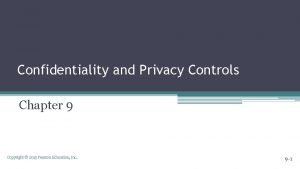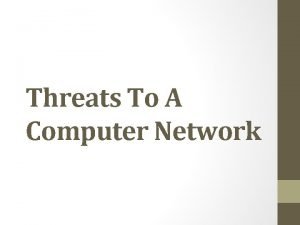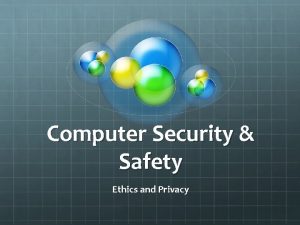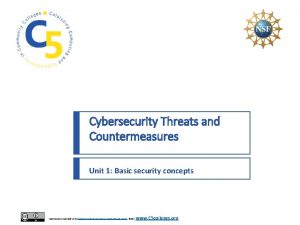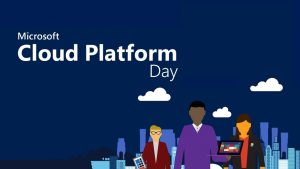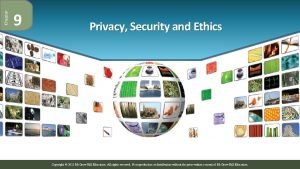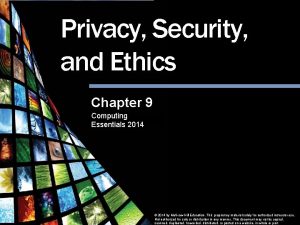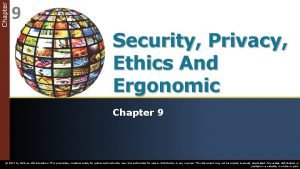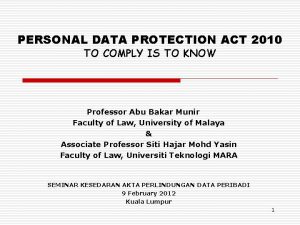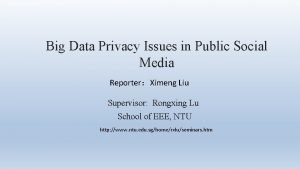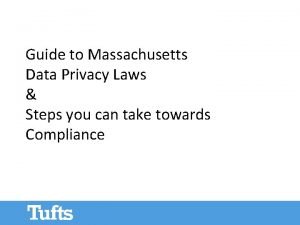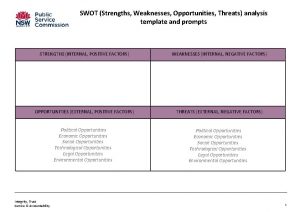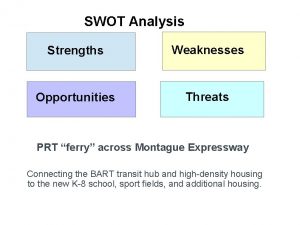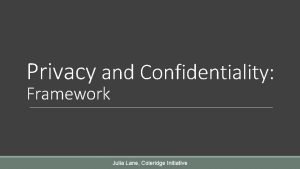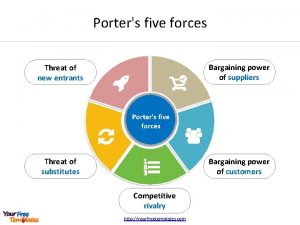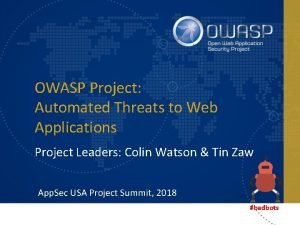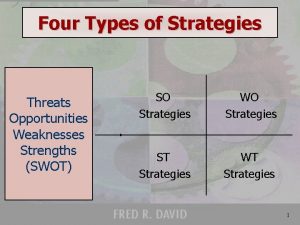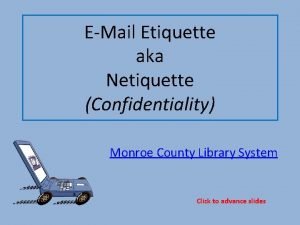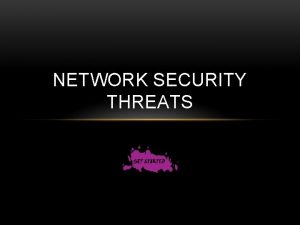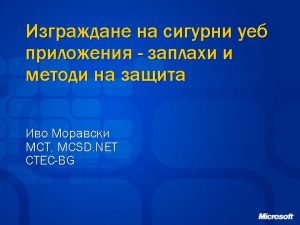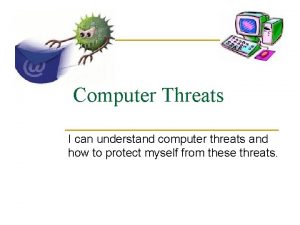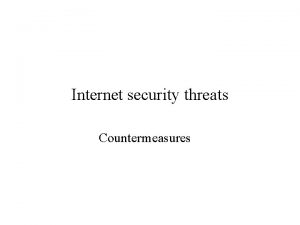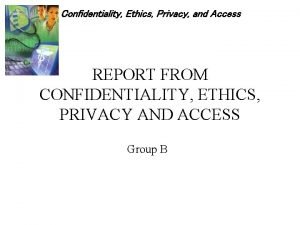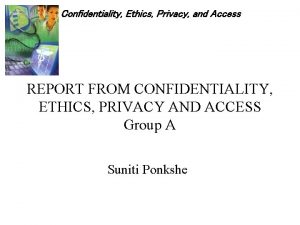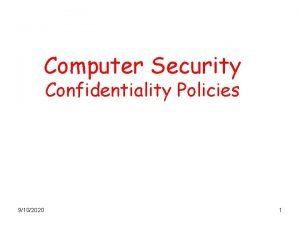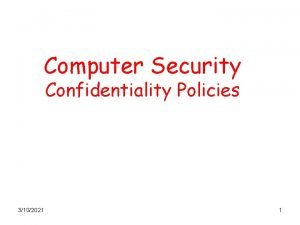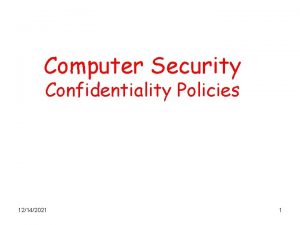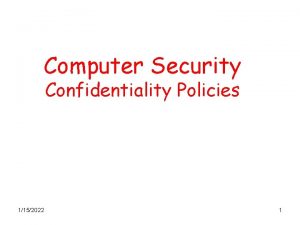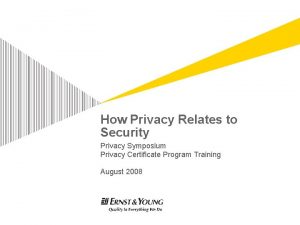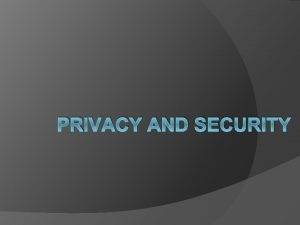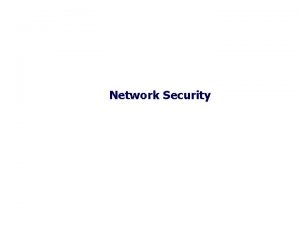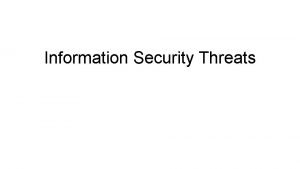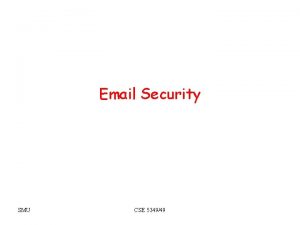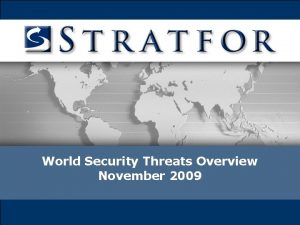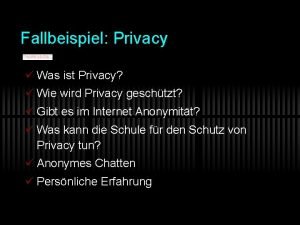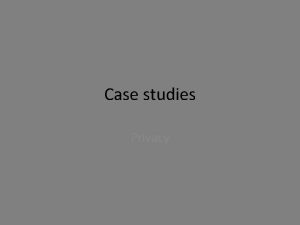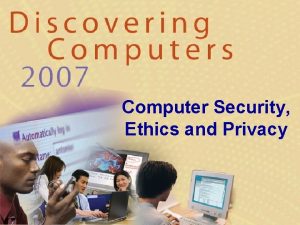Security Threats Computer Security Confidentiality Data confidentiality Privacy
































- Slides: 32

Security Threats

Computer Security • Confidentiality – Data confidentiality – Privacy • Integrity – Data integrity – System integrity • Availabilty

The Security Requirements Triad

Additional Concepts • Authenticity • Accountability

Threats

Threats

Threats

Threats

Assets

Intruders • Masquerader: a masquerade is a type of attack where the attacker pretends to be an authorized user of a system in order to gain access to it or to gain greater privileges than they are authorized for. • Misfeasor: The misfeasor is a user who access data, programs, or resources for which such access is not authorized. • Clandestine user: A clandestine user is who seizes supervisory control of the system and uses this control to evade auditing and access controls or to suppress audit collection.

Intruders

Intruders

Intruders

Backdoor • Trapdoor • Secret entry point • Useful for debugging tool for programmers

Logic Bomb • Explodes when certain conditions are met – Presence or absence of certain files – Particular day of the week – Particular user running application

Trojan Horse • Useful program that contains hidden code that when invoked performs some unwanted or harmful function • Can be used to accomplish functions indirectly that an unauthorized user could not accomplish directly – User may set file permission so everyone has access

Mobile Code • Transmitted from remote system to local system • Executed on local system without the user’s explicit instruction

Multiple-Threat Malware • Multipartite virus infects in multiple ways • Blended attack uses multiple methods • Ex: Nimda has worm, virus, and mobile code characteristics

Parts of Virus • Infection mechanism • Trigger • Payload

Virus Stages • Dormant phase – Virus is idle • Propagation phase – Virus places an identical copy of itself into other programs or into certain system areas on the disk 20

Virus Stages • Triggering phase – Virus is activated to perform the function for which it was intended – Caused by a variety of system events • Execution phase – Function is performed 21

Virus Classification by Target • Boot sector infector • File infector • Macro virus

Virus Classification by Concealment Strategy • Encrypted virus – Random encryption key encrypts remainder of virus • Stealth virus – Hides itself from detection of antivirus software

Virus Classification by Concealment Strategy • Polymorphic virus – Mutates with every infection • Metamorphic virus – Mutates with every infection – Rewrites itself completely after every iteration

Macro Viruses • Platform independent – Most infect Microsoft Word documents • Infect documents, not executable portions of code • Easily spread • File system access controls are of limited use in preventing spread 25

E-Mail Viruses • Attachment • Open e-mail • Uses e-mail software to replicate

Worms • Use network connections to spread from system to system • Electronic mail facility – A worm mails a copy of itself to other systems 27

Worms • Remote execution capability – A worm executes a copy of itself on another system • Remote log-in capability – A worm logs on to a remote system as a user and then uses commands to copy itself from one system to the other

Worm Propagation Model

Bots • Zombie or drone • Program secretly takes of another Internetattached computer • Launch attacks that are difficult to trace to bot’s creator • Collection of bots is a botnet

Rootkit • Set of programs installed on a system to maintain administrator (or root) access to that system • Hides its existence

System Call Table Modification by Rootkit
 Confidentiality and privacy controls
Confidentiality and privacy controls Cvs privacy awareness and hipaa training answers
Cvs privacy awareness and hipaa training answers Common computer threats
Common computer threats Is a destructive event a program is intended to deliver.
Is a destructive event a program is intended to deliver. Wireless security threats and vulnerabilities
Wireless security threats and vulnerabilities Cyber security threats and countermeasures
Cyber security threats and countermeasures Ccna security chapter 1
Ccna security chapter 1 Communication channel threats
Communication channel threats Wireless security threats
Wireless security threats Microsoft from back doors gov active
Microsoft from back doors gov active Chapter 9 privacy security and ethics
Chapter 9 privacy security and ethics Chapter 9 privacy security and ethics
Chapter 9 privacy security and ethics Chapter 9 privacy security and ethics
Chapter 9 privacy security and ethics Hipaa privacy and security awareness training
Hipaa privacy and security awareness training Privat security
Privat security Malaysia data privacy law
Malaysia data privacy law Big data privacy issues in public social media
Big data privacy issues in public social media Paige kowalski
Paige kowalski Data privacy massachusetts
Data privacy massachusetts Major threats to biodiversity
Major threats to biodiversity Grassland animals adaptations
Grassland animals adaptations Threats to biodiversity a case study of hawaiian birds
Threats to biodiversity a case study of hawaiian birds Strength weakness opportunity threat template
Strength weakness opportunity threat template Strengths opportunities threats weaknesses
Strengths opportunities threats weaknesses Julia lane coleridge
Julia lane coleridge Threats of new entrants
Threats of new entrants Automated threats
Automated threats Face threat
Face threat List of opportunities and threats
List of opportunities and threats Threats to folk culture
Threats to folk culture Impending danger examples
Impending danger examples Bcc trolling email
Bcc trolling email New caledonia barrier reef threats
New caledonia barrier reef threats
